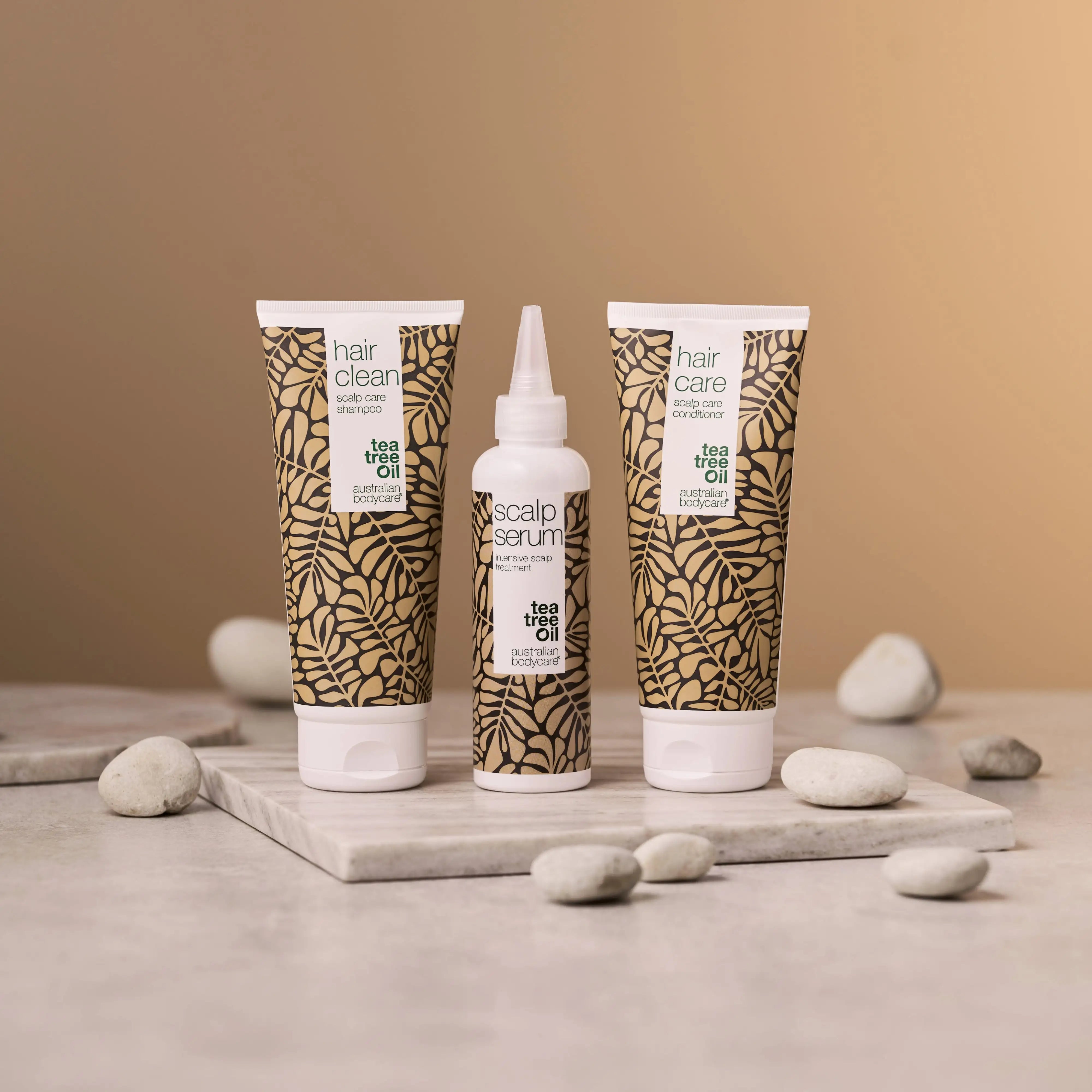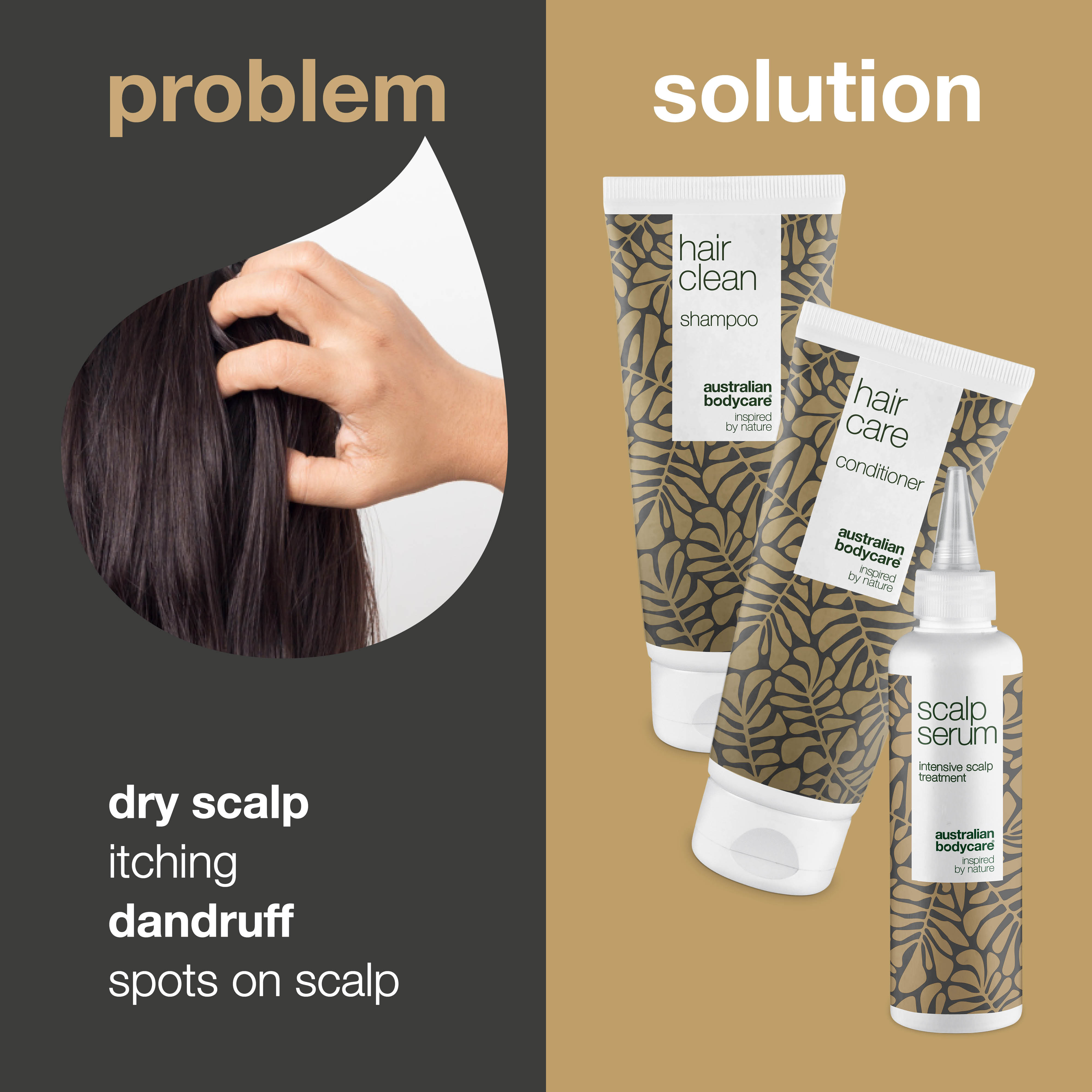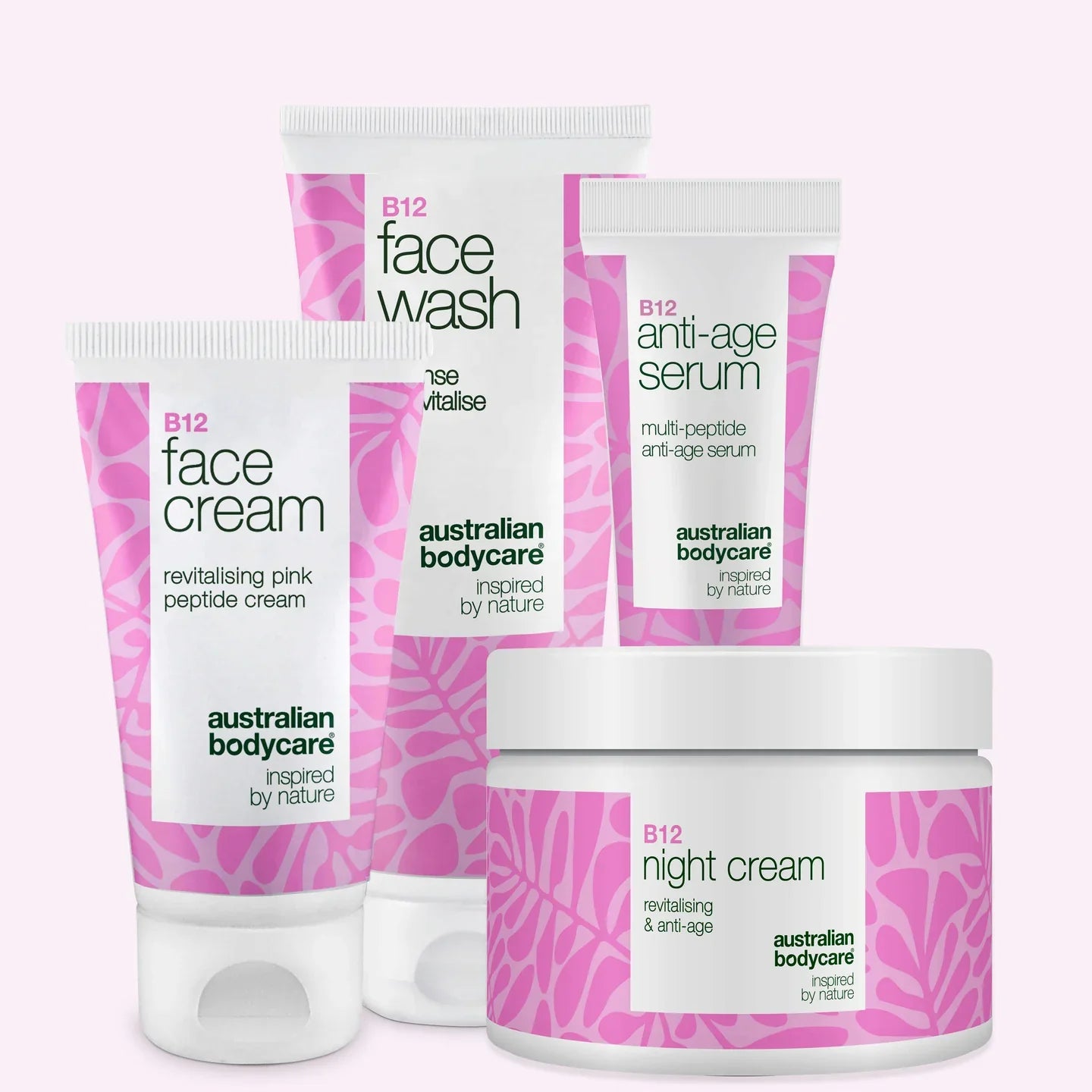How to Get Rid of Seborrheic Dermatitis
Seborrheic dermatitis is a common problem for some adults. The skin conditions can cause dandruff, redness, swelling and irritation of the scalp.
But why do people get seborrheic dermatitis? How often does it occur? How do you treat it? And is it possible to prevent it?
Table of contents
What is Seborrheic Dermatitis?
Seborrheic dermatitis is a scalp condition like eczema that affects a large number of people frequently throughout their lives. Up to 30% of the adult population experience skin problems to some degree.
However, the figure is somewhat smaller if we only look at more severe cases. According to experts in the field of eczema, only 5% of the adult population experience severe skin irritation, soreness and itching with their skin condition.
Seborrheic dermatitis is, in most cases, a disorder that affects the scalp or face. This kind of eczema usually occurs from the time you hit puberty. In rare cases, other parts of the body besides the scalp and face can be affected – it may appear on the chest, back, armpits, navel and crotch.
Infants can also be affected by a variety of skin conditions. They will mostly affect the scalp, but it can still spread to other parts of the body. In babies, we usually call this eczema cradle cap.
Seborrheic dermatitis is also known as:
- Scalp eczema
- Seborrheic eczema
The word seborrheic comes from the word sebaceous. Sebaceous glands produce sebum. It’s the areas of the body where there are many sebaceous glands that seborrheic dermatitis is most common.
Seborrheic Dermatitis Treatment
Most doctors will recommend a good medicinal shampoo as the primary treatment. Most medicinal scalp shampoos contain either tar, zinc pyrithione or ketoconazole, which all inhibit the growth of fungi.
Whether you need a medicinal shampoo typically depends on the extent of your eczema. If you experience swelling and redness with your dermatitis, it may be advantageous to use a supplementary cream too.
The cream will usually contain an antifungal hormone that penetrates into the skin of your scalp and treats the symptoms.
If you have a particularly severe case of eczema, you may be referred to a dermatologist. A dermatologist will usually give you the same treatment as above or localised treatments for yeast fungi. In addition, your dermatologist may also treat you with soft X-rays.
You should be aware that in the worst cases of recurrent eczema problems, regular treatments may be required. In other words, it is not enough to do a single treatment, as the eczema will only return.
Regular treatments are typically 2-3 times a week, using both creams and shampoos. These products contain either anti-inflammatory hormones or calcineurin to keep the eczema down.
Recommended anti-dandruff products
Scalp Serum from Australian Bodycare contains antiseptic Tea Tree Oil and is therefore a highly recommended remedy for seborrheic dermatitis which can also be used by eczema sufferers.
Anti-Dandruff Shampoo
If you experience scalp pain or eczema elsewhere on the body, you can use an anti-dandruff shampoo to treat it.
A suitable anti-dandruff shampoo usually contains tar, selenium or ketoconazole, which combat the growth of yeast fungi on the scalp.
Do not use an anti-dandruff shampoo as frequently as normal shampoo, as the scalp cannot handle the ingredients as often.
Depending on the severity of your eczema, your doctor will typically recommend using your shampoo 1, 2 or in special cases, 3 times a week.
Always be sure to wash your anti-dandruff shampoo completely out of your hair once you’ve used it. Remember to follow the instructions on the bottle, as the best way to apply and use anti-dandruff shampoo can vary from product to product.
Read more: Fungal infections on the scalp – Get rid of scalp problems
Recommended anti-dandruff products
Scalp Serum from Australian Bodycare contains antiseptic Tea Tree Oil and is therefore a highly recommended remedy for seborrheic dermatitis which can also be used by eczema sufferers.
Video: How to use Scalp cure from Australian Bodycare
Why Do You Get Seborrheic Dermatitis?
This dermatitis is most often caused by an overproduction of yeast fungi on the scalp or other sebaceous gland areas. Yeast fungi, also known as Pityrosporum oval, are found on all humans, so there’s nothing unusual about getting a fungal infection.
Problems occur if you experience an overgrowth of the yeast, as this causes your body to replace the skin cells more frequently. Dandruff is flakes of these dead skin cells, and if you shed more of these than normal, it results in dandruff and skin problems.
There are generally three different reasons why you may have seborrheic dermatitis. These reasons affect up to 30% of the adult population to varying degrees:
- Sebum production – The eczema occurs, as mentioned, on areas of the body that produce sebum. As the dermatitis develops, sebum production increases. Seborrheic dermatitis due to increased sebum production typically first occurs when you hit puberty. Men are more likely to be affected as the sebaceous glands are further stimulated by male sex hormones.
- Skin fungal infections – The skin fungi or yeast, Pityrosporum oval (also called Malassezia furfur), sometimes colonises one or more central places on the body. As mentioned above, this excess of fungi results in skin cells being replaced more frequently, which may cause dandruff.
- Immune system defences – Seborrheic dermatitis can also flare up if your immune system is weakened. Fungal infections are common on people diagnosed with AIDS. You may also be more prone to dermatitis if you are regularly feeling stressed, although this is not as common.
Seborrheic dermatitis can occur anytime during the year, however it’s most prevalent in the winter and during hot, dry summers when our scalps dry out.
READ MORE: Why do you get dandruff?
What Does Seborrheic Dermatitis Look Like?
If you are unsure whether you have seborrheic dermatitis or not, you can always check yourself for the symptoms listed below.
Please note that a doctor’s examination (which may include taking small skin samples) may also be necessary for an accurate diagnosis.
9 Symptoms of Scalp Skin Problems:
- Greasy yellow dandruff on the scalp
- Dry white dandruff on the scalp
- Varying degrees of redness and itching on the scalp
- Hair loss in severe cases
- Dandruff and redness around the eyes
- Dandruff and redness on the nose
- Dandruff and redness in the armpits
- Dandruff and redness on the genitals
- Inflammation of the hair follicles on the chest and back
If you are affected by eczema on your scalp, the most typical symptom will be a sprinkling of white or greasy dandruff on your scalp, in your hair and falling onto your clothes.
The symptoms may be severe if you are affected by eczema on your face – it may be in the form of yellow dandruff on the forehead, in the eyebrows or on the eyelashes. Eczema on your body can also result in the same yellowish dandruff on the chest, back, genitals and navel.
Keep in mind that the dandruff flakes will most often by localised to those areas only, and the skin will be reddish when they peel or fall off.
Can You Get Chronic Seborrheic Dermatitis?
As mentioned above, seborrheic dermatitis affects many people to different degrees. If you are diagnosed with eczema, it is a chronic diagnosis. In other words, you will have eczema for the rest of your life.
However, eczema varies throughout life, and it can almost always be kept at bay by taking the right treatment.
Please note that there may be subsequent infections with candida yeast or bacteria if you do not maintain your treatment correctly. Such infections are usually in cracks and folds when your skin is enclosed on your body.
Most people who are affected by seborrheic dermatitis, and thus deal with it for the rest of their lives, find the condition very easy to treat and live with. The skin condition is relatively mild for most people and it can be treated easily.
If you experience a severe case of dermatitis, which quickly flares up after taking a single treatment, then you may need ongoing treatments. In this case, the eczema should be treated continuously 1-2 times a week.
How Do You Prevent Seborrheic Dermatitis?
It’s hard to completely prevent seborrheic dermatitis. As previously mentioned, some people may be more prone to it than others, and you may experience it to varying degrees.
However, there are some things you can do to avoid aggravating the condition:
- Avoid perfumed moisturising skin creams if possible
- Certain medications and hormonal conditions can aggravate the disease. Avoid or treat if possible
In addition, always make sure to begin the necessary treatment of your dermatitis as soon as you discover the first symptoms.
Is Seborrheic Dermatitis Contagious or Dangerous?
As eczema and skin conditions vary greatly from person to person, it is difficult to answer this question. It may be painful and uncomfortable, but as long as you seek treatment it is not usually dangerous. In most cases, the eczema will only appear as skin irritations, itching and redness to varying degrees.
Seborrheic dermatitis is not infectious, and you should never be afraid of being in contact with people that have dermatitis or dandruff.
We have all the yeast fungi that causes these problems on our skin; only certain people will be prone to overgrowth, thus developing skin problems like eczema and dermatitis.
Even if you have a mild case of dermatitis, coping with it throughout your entire life can make it feel like a much bigger problem. Therefore, we would like to really emphasise the importance of proper treatment, no matter how badly or mildly you are affected.
Scalp Eczema
Eczema on the scalp generally results in skin irritations and dandruff. These symptoms are easily confused with seborrheic dermatitis.
If you experience dandruff and skin irritations on your scalp, it could be eczema, psoriasis or seborrheic dermatitis.
In some cases, however, you may be affected by both eczema and dermatitis. This requires more specialised treatments and you should consult your doctor or dermatologist for further guidance.
Peeling Skin on The Scalp
The over-secretion of sebum on the scalp is typically due to an overgrowth of the Pityrosporum ovale yeast, which causes the skin to produce replace skin cells quicker than normal. This also means that the skin releases a larger number of dead skin cells at a time, which may peel or flake off as dandruff.
If the overgrowth of this fungus is not treated and controlled, it will result in excessive dandruff. The fungal infection on the scalp can also expand to cause skin conditions elsewhere on the body.
Typically, peeling skin on the scalp will go hand in hand with peeling skin on the face, behind the ears, on the shoulders or on the back.
Eczema on The Face
Eczema on the face will typically occur in the following areas:
- At the corners of your nose and nostrils
- Between your eyebrows
- Above the centre of each eyebrow
Although the eczema most often occurs in these areas, it can easily spread to other areas of the face. This may include the forehead, around the mouth and cheeks.
Sadly, eczema on the face is not an uncommon condition and many people experience problems with at some point in life. Typically, eczema on the face will occur if you also have a scalp condition.
You must be sure that it’s a fungal problem, and not another type of eczema, before starting treatment.
We always recommend that you contact your own doctor or dermatologist if you experience symptoms or skin lesions on the face. A professional will ensure that you receive the correct treatment right away.
Some eczemas on the face are due to an overgrowth of yeast fungi, resulting in more dead skin cells and thus more skin peeling off.
You can treat the eczema by using anti-fungal skin moisturizers, which is applied to the scalp, face and any other areas of the body where you are affected by the condition.
To combat dandruff, we recommend using Scalp Cure from Australian Bodycare. This product can be applied to both the scalp and the face. For optimal effect, apply in the evenings and leave to soak in overnight.
With the right face treatment, you can keep the eczema calm by inhibiting the growth of yeast fungi.
Unfortunately, you cannot completely cure the disorder as it is chronic. But with the right face treatment, it is possible to control the eczema so that it isn’t visible and doesn’t impact your life.
You can also reduce the risk of the eczema reappearing and spreading by ensuring your skin is not overly greasy. If you wash and cleanse your skin properly, the skin will be less greasy, thus making it harder for the fungal infection to spread.
Seborrheic Dermatitis and Hair Loss
If you have a severe case of seborrheic dermatitis, you may experience some hair loss. But do not fear – the hair loss isn’t permanent and over time it will grow back. Dermatitis doesn’t lead to permanent baldness – you can expect new hair to start growing within 6 months of the hair loss.
In some cases, your hair will begin to grow again within the first month. The sooner you start the correct treatment for seborrheic dermatitis and hair loss, the sooner it will start to grow back. Seek treatment as soon as you notice the first symptoms.
Seborrheic Dermatitis and Diet
Scalp problems and diet sometimes go hand in hand. You can provoke seborrheic dermatitis by eating an unhealthy diet, and you can improve the symptoms of dermatitis by eating a healthier diet.
The scalp condition may be caused by many things, including an unhealthy diet. Some of the common foods that can provoke skin conditions like dermatitis include sugary drinks, sweets and refined foods such as white flour and bread.
These and similar foods have a higher yeast content and can thus increase the risk of seborrheic dermatitis. They promote the growth of various yeast fungi such as candida albicans, that cause the skin condition.
You may want to try a yeast-free diet for a few months to see if it has any effect on your scalp.
If you want to know more about diet and scalp/skin conditions speak to a medical practitioner.







